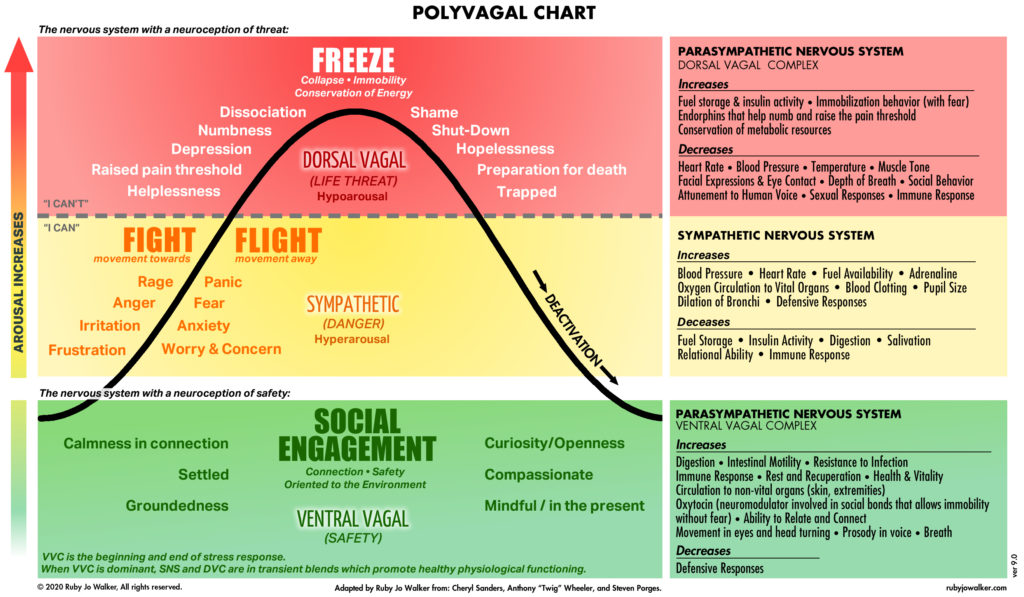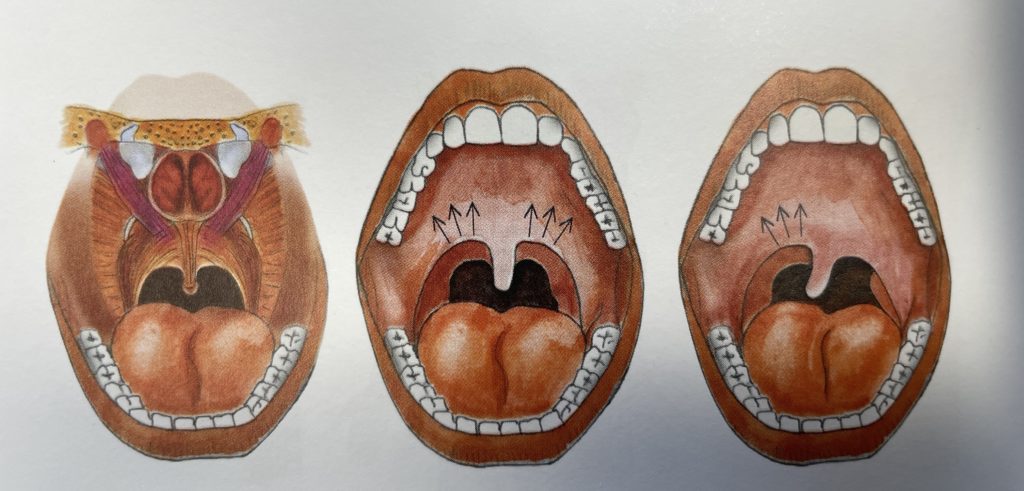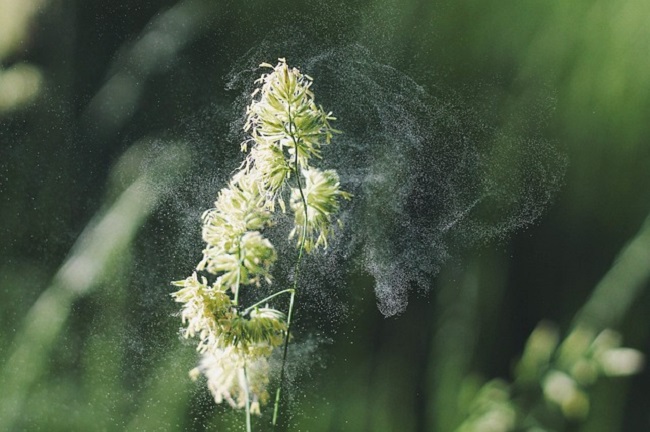HOW TO TEST YOUR VAGUS NERVE | Polyvagal Theory – The Movement Paradigm
 themovementparadigm.com
themovementparadigm.com
Did you know that you can test your vagal nerve function, and not only can you test it, but you can begin to tap into the healing power of the vagus nerve? Your vagus nerve is responsible for the regulation of internal organs such as digestion, heart rate, respiratory rate and impacts certain reflex actions like coughing, sneezing, and swallowing. It is critical to optimal health and you can tap into it-but first, find out what state you’re in.
The Polyvagal Theory
Before we jump into how you can assess the vagal nerve, let’s talk a little bit about the autonomic nervous system. We used to think of the autonomic nervous system as simply fight or flight or rest and digest. However, Dr. Steven Porges’s work shows us that there’s much more to it and there are actually three circuits of our autonomic nervous system. This is referred to as the polyvagal theory.
Essentially we have our fight or flight state, which is also considered our sympathetic spinal activation. We also have our dorsal vagal state, referring to the most primitive vagal nerve, and indicates we are in a freeze state. This means we are shut down and feel hopeless. We are disassociated from ourselves and other people.
Lastly, we have the ventral vagal circuit, which means we are in a state of social engagement-a state of safety. This means we are connected to the greater world. We’re connected to ourselves. We are joyful and mindful. All three of these are critical and during the day we go through all of these different circuits, but most often we don’t even recognize that we do because we go through them so quickly. However, we can get stuck in these. We can get stuck in a fight or flight stress response where we’re constantly worried, anxious, frustrated, or irritated. It’s also easy to remain in a shut-down mode. We of course could be mindful and joyful. We’re constantly fluctuating.

Check out our previous blog on “How to Map your Nervous System” here.
Breaking that down a little further, let’s speak about the ventral vagal nerve. This originates from the brainstem just as the dorsal vagal nerve does. This innervates most of the muscles of the throat, such as the larynx, pharynx, uvular muscles as well as the levator palatini muscles in the back of the throat. Whereas our dorsal vagal nerve, which is more subdiaphragmatic, innervates the muscles of the stomach, liver, and digestive system. It also does innervate the muscles of the heart and lungs. Just a reminder, the dorsal vagal nerve is impacting that freeze state, shutdown mode, whereas the ventral vagal is eliciting that sense of inner calm and relaxation and is associated with our state of safety or state of social engagement.
Testing Ventral Vagal Function
You may need a partner for this. This is a really powerful technique that can have a profound impact on how you address your body. Remembering where all the powerful neural innervations are, one of the innervations of the ventral vagus nerve is the throat.
- Grab a partner and a flashlight.
- Have your partner look at the inside of the mouth at the back of the throat at the uvula that drops down right in the center.
- Now, perform an “ah, ah, ah” sound.
- When you open your mouth, you can use a tongue depressor or your fingers to push down your tongue so the uvula and soft palate can be more visible.
- The examiner is going to look at the uvula to see if there is a deviation to one side.

What you’re looking for, specifically, is if there’s any deviation from one side to the other. If the uvula pulls over to one side, then that is indicative of ventral vagal nerve dysfunction. If it moves up symmetrically, then that means that you are in that state of social engagement. So, if you have the soft palate moving up on one side, let’s say it’s moving up on the left side, and not moving up on the right side, then that would be indicative of a dysfunction of the pharyngeal branch of the ventral vagal nerve.
Now, that you’ve tested let’s move into how to stimulate the vagus nerve.
Vagus Nerve stimulation: The basic exercise
If your test indicated that you had a ventral vagal nerve dysfunction, perform the basic exercise for vagus nerve stimulation.
- Lie on your back on the ground.
- Interlace your fingers and bring them behind your head- right at the base of the skull
- Look with your eyes to the right until you sigh, swallow, or yawn, and then repeat on the other side.
- You may blink during the exercise.
This is just one way to measure your autonomic nervous system function. This is also just one way out of many to stimulate your vagus nerve. However, recognize there are so many ways to become more aware, more in tune, and map your nervous system. You are completely in control of what’s happening in your life.


